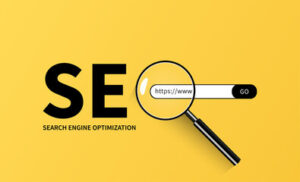Corsi Di Formazione Aziendale are a great way to develop your employees. They offer training courses that focus on the specific needs of your industry and provide valuable skills to your employees. They also help improve employee morale and reduce turnover rates.

Whatfix is a top-tier digital adoption platform that assists users in navigating enterprise applications. It enables organizations to enhance user onboarding, reduce support calls, and facilitate engagement management. Its features include personalized in-app digital guidance, task lists, beacons, and popups. It also provides data reports that help organizations optimize their software and workflows.
Moreover, it can identify areas of friction in digital processes and workflows. These trouble spots can be easily addressed using new in-app content, thereby enhancing employee experience and driving adoption. Its visual, drag-and-drop tagging editor allows non-technical administrators to create new in-app content without having to write code. This software helps users become more proficient in their work and is easy to learn for both seasoned employees and novices.
The platform offers many benefits to companies of all sizes, including enhanced employee engagement and improved productivity. In addition, it can be used for corporate learning initiatives, such as leadership training. Its step-by-step walkthroughs make it easy for users to understand and navigate a complex application, which makes it ideal for onboarding new hires. In addition, Whatfix offers multiple customization options for each individual employee, allowing them to get the most out of the platform.
Another advantage of Whatfix is that it can be used to deliver important announcements and messages to employees. This is especially helpful for onboarding new hires, as it can ensure that they receive the information they need in a timely manner. Additionally, it can be used to communicate changes in policies or company procedures.
In addition, Whatfix is an ISO-certified company that uses secure connections to protect personal information. Its privacy policy states that it will not sell, rent or trade your information. It also provides a free trial to prospective customers. Its customer service representatives are available to answer questions via phone or email.
Whatfix is a SaaS (Software-as-a-Service) platform that provides in-app digital guidance for web, desktop, and mobile applications. Its GenAI-driven product suite includes a Digital Adoption Platform, Mirror, which enables simulated application environments for hands-on training, and Product Analytics, a no-code tool for tracking user behavior and application use.
In-app training
Corporate training is an essential tool to boost employee performance, drive business growth, and foster a strong company culture. It also helps businesses meet regulatory requirements and improve productivity. Corporate training programs help employees build their skills in leadership, communication, and other soft skills that are essential for workplace success. Moreover, they also provide opportunities for employees to make their own professional development roadmaps. According to Deloitte, companies with a strong learning culture see higher retention rates and employee motivation.
In-app training provides a powerful platform to deliver just-in-time education to users. It allows product teams to provide guided tours, video tutorials, and a help widget without having to build out a separate external education platform. This is especially helpful for new hires and users unfamiliar with your products. Moreover, these guides are easily discoverable and can be accessed in the context of the app, rather than requiring users to navigate to another destination for relevant information.
The key to creating a successful in-app training program is to know your audience and their pain points. For example, if your product is used by remote workers, you should include guidance on how to manage time and resources remotely. You should also provide information about workplace policies and rules, such as the types of leaves that are offered. Finally, you should include a description of the job duties and responsibilities for each role.
Additionally, you should include a section on the company’s vision and values. This will help your new hire understand how their work relates to the company’s goals. You should also provide a list of key metrics and KPIs that are important to the company. This will give them a clear idea of how their work translates to revenue and growth.
Lastly, you should include a list of available resources for your new hire. This will help them find answers to their questions and will increase the likelihood of engagement and adoption. For example, you should offer training on how to use the product and any additional software tools that they might need.
Online training
Corporate training is an important part of a company’s growth and development. It enables employees to upskill, and also provides managers and individual contributors with clear paths for their professional growth. This can help to increase employee engagement, retention, and productivity.
Online training services are increasingly being offered by corporate trainers to meet the needs of their clients. These programs can be conducted in a variety of formats and can include virtual classroom sessions, self-paced learning modules, and videoconferences. They can also include interactive activities, such as flashcard drills and game-based learning activities, which will help learners retain information. These techniques will also help to increase engagement, which is often a challenge for corporate learning.
When choosing a corporate training service, be sure to select one that is experienced and has a good track record. Moreover, the trainers should be knowledgeable about the company’s policies and procedures. They should be able to provide a comprehensive assessment of the current state of the organization’s talent management program, and they should be able to develop a plan for improving it.
Another important consideration when selecting a corporate training service is the ability to deliver high-quality content. The best way to do this is by leveraging technology, which can enable the creation of interactive, adaptive, and dynamic learning experiences. It is also important to ensure that the content of the courses meets the requirements of the employees, so that they can be effectively implemented and incorporated into their daily work.
A corporate training service should be able to assess the learning needs of their clients and tailor the courses accordingly. It is also important to understand the different learning styles and deliver the courses in a way that is engaging for the learners. For example, some learners may prefer visual or kinesthetic content, while others may learn better through group discussions and breakout sessions. In addition to these factors, it is essential to consider the time constraints of the learners and provide a flexible scheduling system.
There are several ways to become a corporate trainer, including earning a graduate degree in instructional design or training and development. Degrees in these fields offer a solid foundation in learning theory and methodology, as well as proficiency with popular instructional design tools. In addition, a degree in the field of communications or social sciences can also be helpful in developing a strong communication skillset.
Face-to-face training
Corporate training is an essential tool for businesses to help them achieve their goals. It enables organizations to provide onboarding, product training, role training, upskilling, compliance and more. It also helps them grow their business and maintain a competitive edge. However, creating successful training programs requires proper planning, content creation, engagement and interaction. Here are a few tips for developing an effective corporate training system.
Before you develop your training program, it’s important to figure out what your employees already know and what they need to learn. This can be done through questionnaires, surveys, observations, examining employee work, or formal assessments. This information will allow you to develop a more tailored and targeted approach. You can then decide which training methods will best suit your employees and learning style.
During face-to-face training, employees can interact with instructors in real time and get immediate feedback. Instructors can use visual aids to demonstrate topics and discuss them with students. In addition, they can share their own experience and expertise. This type of learning is typically more expensive than online training, but it is an effective way to teach complex subjects and ensure that students understand the material.
Another popular corporate training service is remote work training, which teaches employees how to be productive while working remotely. This training focuses on ensuring that employees remain productive, engaged and connected while working from home or another location away from the office. It also provides strategies for overcoming challenges such as isolation and procrastination.
Finally, a third common corporate training service is presentation skills training, which teaches employees how to make presentations that engage audiences and convey their message effectively. This training focuses on building employee confidence and delivering presentations that inform, inspire and motivate employees. It also covers topics such as creating a storyboard, managing nerves, using slides and audiovisual aids, and delivering questions and answers.
While most companies have some form of training happening, a formalized program will create consistency and accountability. It will also make it easier to measure training effectiveness. Creating a corporate training program is not as difficult as it seems and can help your business become more efficient.
